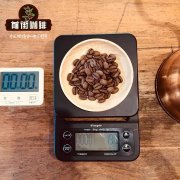The present situation and Development trend of China's Coffee Industry in 2019 _ the Development Prospect of Coffee Industry is really so Great

Professional coffee knowledge exchange more coffee bean information please follow the coffee workshop (Wechat official account cafe_style)
Coffee, as a traditional western drink, has a long history and cultural heritage. The world consumes at least 400 billion cups of coffee every year, and the current annual global coffee consumption is about 10 million tons. Coffee is the first of the two largest drinks in the world, and it is also the second largest trading commodity in the world after oil.
China's coffee industry was introduced and developed with the development of reform and opening up. Since the middle and late 1990s, due to China's strong economic driving force, people's ability to accept new things and the deepening of exchanges with Western countries, the coffee industry has developed rapidly, and many chain coffee bars have been stationed in major cities in China, which has become an indispensable part of people's life. The coffee culture is getting stronger and stronger.
According to the USDA's 2018 coffee market report, China's domestic coffee consumption has almost doubled in the past four years. However, this figure only hovers around 10% and 15% of the current consumption in the European Union and the United States, respectively, which shows that the future potential of the Chinese coffee market is huge.
In early 2018, Luckin Coffee raised more than 1 billion yuan to compete with Starbucks in retail coffee. Chinese mainland has announced plans to open 3000 new stores in the next five years, while Canada's Starbucks plans to open more than 1500 stores in China. Costa Coffee, a British coffee chain, plans to increase its number of Chinese stores by about three times by 2022.
China's coffee market has attracted global attention, and they define China as a rising coffee consumer. But this is just a drop in the ocean in the rapid development of China's coffee market. Nevertheless, little is known internationally about the country's coffee roasting and consumption industry.
So today we will discuss how coffee is roasted and sold in China and how it affects the world.
What kind of coffee do Chinese consumers like?
We observed that older consumers tend to choose low-sour coffee, such as Manning in Indonesia. On the other hand, young consumers may prefer shallow baking, which is more acidic. In addition, Chinese consumers now prefer sweet and clean coffee. With the opening of ordinary black coffee shops or commercial chain stores in China, consumers' professional knowledge of coffee is growing, and the choice of coffee flavor is bound to change constantly.
Who is baking coffee in China?
Although China's coffee market is growing, most coffee beans are actually baked abroad.
According to the USDA, China imported 48 million kilograms of baked beans and baking powder in 2018 / 19, up from 5.6 million kilograms in 2013.
However China is expected to import 120 million kg of instant coffee in 2018 / 19 which is also a significant increase from 41 million kg in 2013.
By comparison, China's imports of raw coffee beans are negligible and are not even listed in the report.
These figures show that in the United States, only 2% of the coffee entering the country is used for roasting, grinding or instant coffee, while 66% of China's total coffee demand is imported in the form of baked beans, ground powder or instant coffee. Thus it can be seen that the reality of the Chinese coffee market is that most consumers still drink instant or low-grade coffee, especially most of the coffee beans imported by China are low-grade Vietnamese robusta coffee.
Challenges facing China's roasted Coffee Industry
As a coffee roaster, he will face a series of challenges! Understand the changing needs of consumers, maintain consistent quality, and balance supply and demand, etc., need to master a lot of information. In addition, they need to obtain a baking license.
The difficulty of obtaining a baking license is one of the biggest problems faced by Chinese bakers at present.
Second, Chinese bakers often face expensive baking equipment. The exclusive distribution agreements of many large international bakers and equipment manufacturers in China allow domestic agents to monopolize the market and raise prices on their own. Most importantly, education and training in coffee roasting is still lacking.
Where is all the coffee grown in China?
China is not only a consumer, but also a coffee grower.
From 2014 to 2018, China produced about 120 million kilograms of raw coffee beans a year. Most of China's coffee is grown in Yunnan Province, mainly Arabica, and is eventually exported to Europe.
China's growing number of roasters are also starting to pay attention to local coffee, which is used because of improved quality and tax advantages.
Most coffee imported into China is subject to an import duty of 8%, as well as transportation costs and other related import charges.
China's influence on the Global Coffee Market
Just like the development of red wine in the Chinese market, if Chinese coffee consumption continues to grow, it will certainly have an impact on global coffee pricing and the balance of supply and demand. If China's per capita coffee consumption reaches half that of the United States, we will see a shortage of global supply in Arabica, leading to a rise in global coffee prices. and growing places around the world may start to grow coffee that is more suitable for Chinese people.
The report on the Market Prospect of China's Coffee Industry in 2019 mainly focuses on the general situation of the coffee industry; the market analysis of the coffee industry; the market promoting factors of the coffee industry; the analysis of key enterprises; and the market development prospect of the coffee industry. Through the analysis of the current coffee industry, this paper summarizes the current development situation of the coffee industry, and thus puts forward the development prospects of the current industry.
Coffee is one of the three major drinks in the world, which is made from roasted coffee beans. It is the main drink popular in the world along with cocoa and tea. With the improvement of Chinese people's living standards and the continuous growth of awareness of coffee culture, China's coffee industry is on the rise as a whole. According to statistics, the size of China's coffee market exceeded 200 billion yuan in 2018. With the change of people's consumption concept, Western goods and consumption habits are gradually accepted. It is expected that the market size will break through the 300 billion yuan mark in 2020.
END
Important Notice :
前街咖啡 FrontStreet Coffee has moved to new addredd:
FrontStreet Coffee Address: 315,Donghua East Road,GuangZhou
Tel:020 38364473
- Prev

How does the most expensive coffee come from? how does it taste?
For more information on coffee beans, please follow the coffee workshop (Wechat official account cafe_style) Rose Summer, which was discovered in the rose summer forests of southwestern Ethiopia in 1931, introduced to Uganda and Tanzania in 1936, introduced to Costa Rica in 1953, and introduced from Costa Rica in 1970 by Mr. Francesca Serraxin of Dongba Seven Agricultural Garden.
- Next

Three waves of coffee product development
Professional coffee knowledge exchange More coffee bean information Please pay attention to coffee workshop (Weixin Official Accounts cafe_style) Open any coffee shop, the bar presented to everyone is a large espresso machine, next to which there are hand washing appliances, Philharmonic pressure, siphon pot, V60 filter cup... Fine coffee and Italian coffee bloom. This is the third global coffee craze.
Related
- What brand of black coffee is the most authentic and delicious? what are the characteristics of the flavor of the authentic Rose Summer Black Coffee?
- Introduction to the principle and characteristics of the correct use of mocha pot A detailed course of mocha pot brewing coffee is described in five steps.
- Which is better, decaf or regular coffee? how is decaf made?
- How much is a bag of four cat coffee?
- How about four Cat Coffee or Nestle Coffee? why is it a cheap scam?
- Which is better, Yunnan four Cats Coffee or Nestle Coffee? How about cat coffee? is it a fake scam? why is it so cheap?
- How about Cat Coffee? what grade is a hoax? which instant coffee tastes better, four Cat Coffee, Nestle Coffee or G7 coffee?
- Process flow chart of coffee making-Starbucks coffee making process what coffee tastes good at Starbucks
- The top ten best coffee beans in the world Rose summer coffee or Tanzanian coffee tastes good
- Yunnan four cat coffee is good to drink?_four cat coffee is a big brand? four cat blue mountain coffee is fake?

